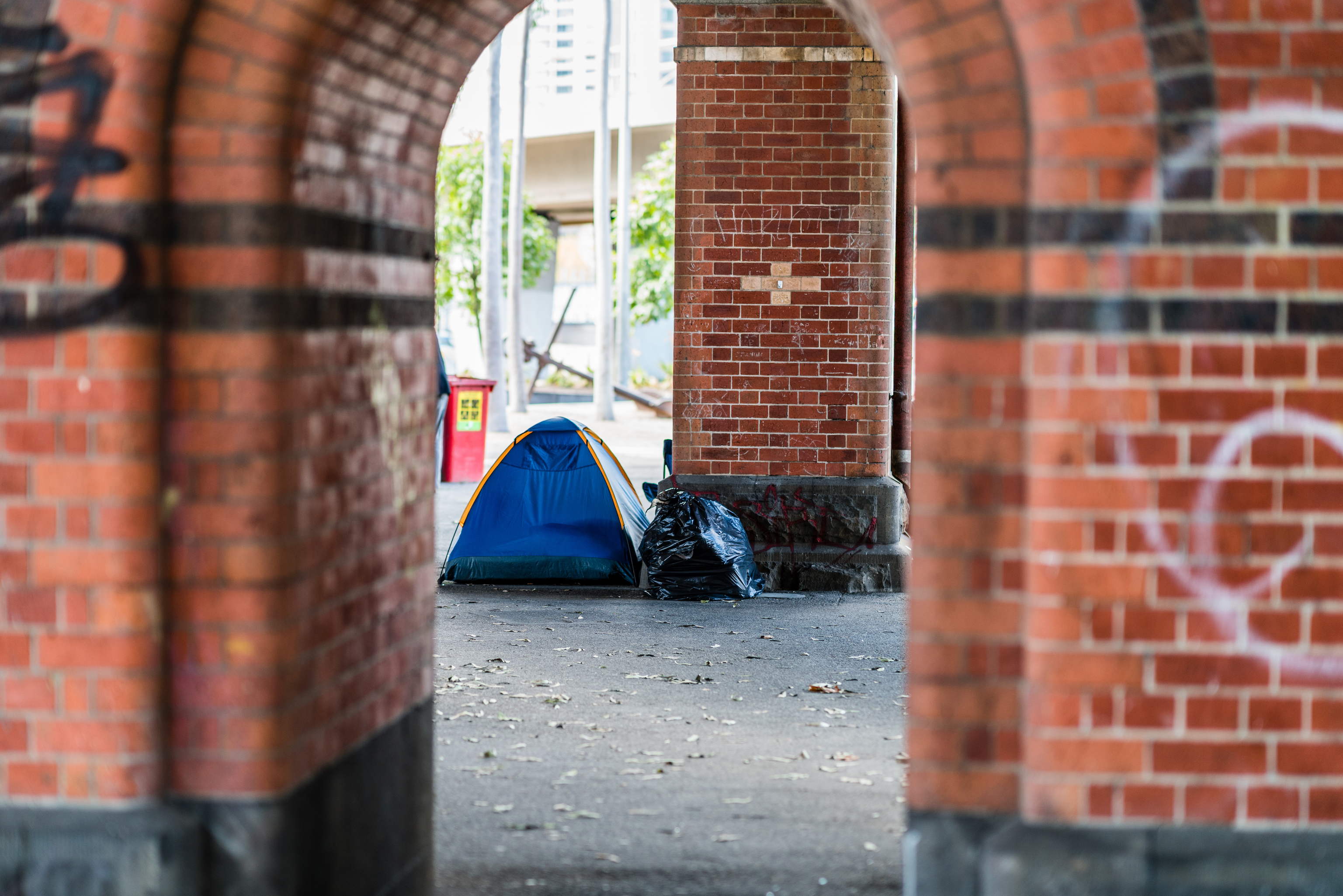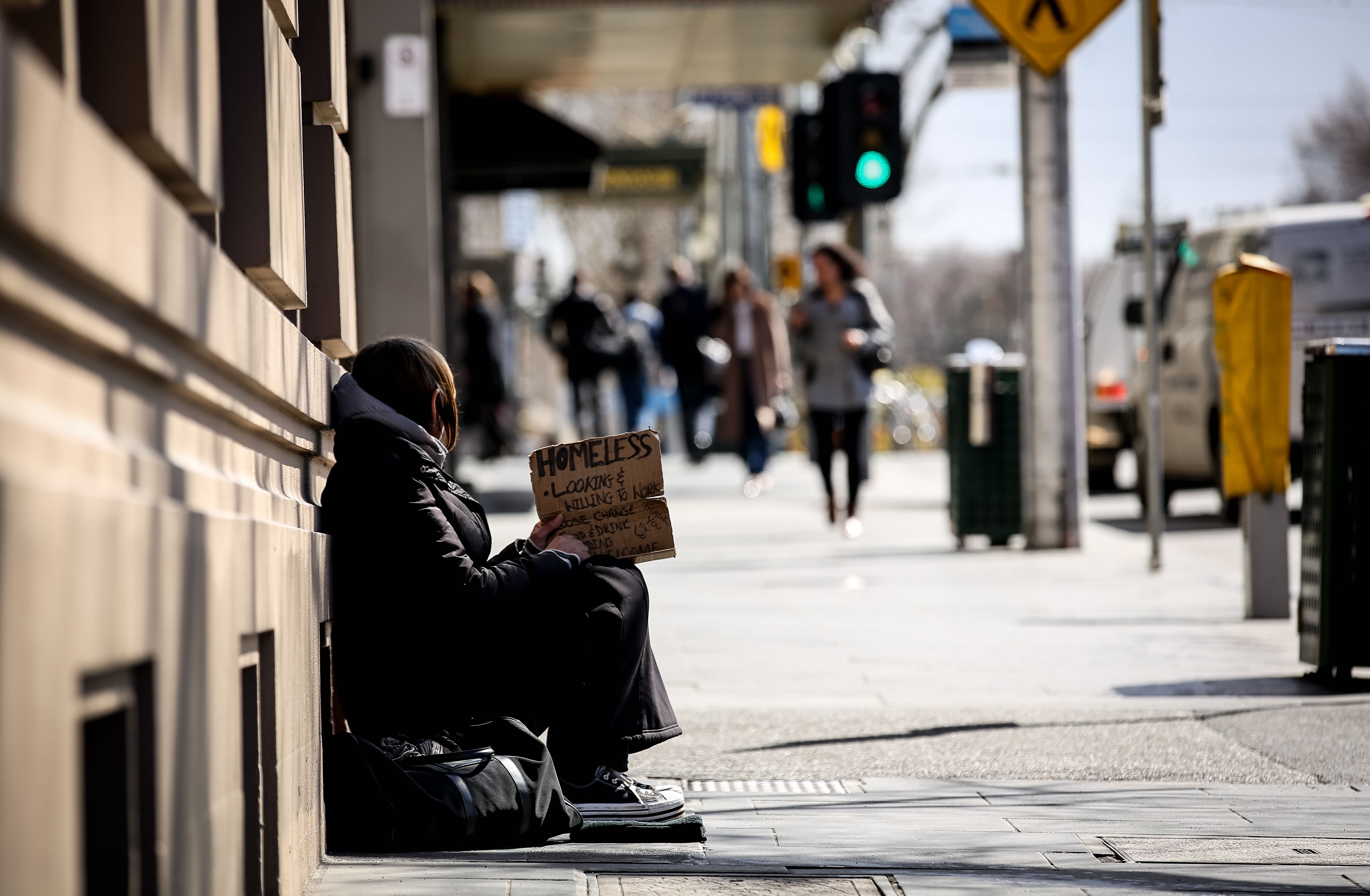
Health & Medicine
Homelessness and violence

Initiatives to protect homeless young people during the pandemic were effective, but we need a long term strategy that delivers better support and helps prevent homelessness
Published 19 May 2021
In 2008 Australia had a national strategic agenda to halve homelessness by 2020, with a strategy of early intervention and improved service provision to finally break the homelessness cycle. This strategic agenda has long since been discarded.
Instead we have been left with rising demand for homelessness services and a national homelessness support system struggling to keep up with this demand.

Homelessness remains, in many respects, a ‘hidden’ issue in Australia. The raw daily experience of what it’s like to be homeless, and the damage it does to young people’s health, wellbeing and life chances are largely hidden from view. We can just walk past the problem on our streets, without seeing it and without understanding it.
The young homeless are even less visible, moving between crowded dwellings, supported accommodation, couch surfing, or staying temporarily with others. But homelessness and the threat of homelessness puts relentless pressure on young people and their families.

Health & Medicine
Homelessness and violence
The young have had the greatest recent increases in homelessness. Rates among those aged 25-34 years have steadily increased over the past three Censuses, from 15,848 in 2006, to 18,411 in 2011 and 24,224 in 2016 –a 32 per cent increase between 2011 and 2016.
According to the 2019-20 Australian Institute of Health and Welfare specialist homelessness services annual report, 290,500 Australians accessed homelessness services over this period, and of these 40 per cent were aged under 25 years.
However, COVID-19 has reminded us that it doesn’t need to be this way.
The pandemic has highlighted the extreme vulnerabilities of the homeless, especially the young homeless. It triggered unprecedented intervention by Australian governments through health, social, and economic strategies, which successfully reduced the incidence of the virus among the homeless, particularly in those rough sleeping.

These strategies included unparalleled investment in emergency and temporary accommodation as well as short-term initiatives to help keep people at risk of homelessness housed, such as moratoriums on evictions and rent increases, and income support in the form of the JobSeeker and JobKeeper initiatives.
The success of these COVID-19-driven housing and social strategies in protecting young Australians from homelessness could and should be the catalyst for strategic and enduring solutions. Unfortunately, real and enduring reform has not yet occurred.

We are facing the risk of a new wave of youth homelessness.
Lockdowns and associated economic downturns have brought an increased demand for homelessness services, demand that is not likely to subside any time soon. The temporary supports put in place at the height of the pandemic are receding, funding for emergency and temporary accommodation is being wound back.
The price of rental accommodation and evictions are now rising as supportive housing and economic strategies are wound down. The lack of availability and affordability in the private rental market, and the scarcity of subsidised social housing disproportionately affects young people. This is compounded by high rates of youth unemployment.
These factors now threaten to fuel a new and larger wave of homelessness in the young.

The Commonwealth’s 2021-22 budget is a missed opportunity to prevent increases in homelessness among young people. Although the Commonwealth’s decision to maintain the Equal Remuneration Order (ERO) supplementation for homelessness services will assist services to provide existing programs and assistance to vulnerable Australians, it doesn’t provide funding to increase capacity for services to respond to the growing homelessness crisis.
This is also missed in the Oppositions’s pledge of 20,000 social housing properties.

Health & Medicine
A paw in need
For too long, government policy has relied on intervening only when young people are at serious risk of falling into homelessness or are already homeless. The danger is that we will keep relying on short-term, crisis-driven approaches such as those precipitated by the COVID-19 pandemic.
Ultimately, these approaches do little to address the underlying drivers of homelessness among the young. Nor do they address the adverse health and social consequences of homelessness.
Population-wide and targeted prevention strategies are rarely discussed or funded. We need to be focusing on the needs of young people prior to their becoming at risk of homelessness. It is possible to identify the drivers of homelessness from early in adolescence, and the interrelationships among them that operate at individual, family, peer-group, school, community, and policy levels.

Targeting these drivers should be central in driving policy reform to reduce homelessness and support young Australians to make a successful transition into stable housing.
In addition to targeting the drivers of homelessness, it is also necessary to focus on the health needs of the young homeless. In order to do this, we must track the health needs and outcomes of these young people at a national level to drive whole of-government policy reform.

Health & Medicine
Victorian kids’ mental health hit hardest during 2020
For example, injuries sustained from being a victim of violence could drive access to subsidised social housing, particularly for young people, and mitigate the physical risks of homelessness. Evidence regarding use of federally-subsidised health services among the young homeless may inform efforts to increase access to these services, and make a strong case for the minimisation of co-payments required for health services.
Although feasible, currently this absence of knowledge is a public health opportunity missed.
To reduce the number of homeless young Australians our approach needs to improve. Short-term, crisis-driven approaches will not prevent a new wave of homelessness or better respond to the health needs of homeless young people.
It is time for an inter-sectoral alliance of researchers, policy makers, practitioners, and young people with lived experience of homelessness to come together and be included in planning processes, to end its devastating effects.
Victorian Homeless Crisis Line 1800 825 955; Frontyard Youth Services 03 9977 0077; Lifeline 13 11 14 1800; RESPECT - 1800 737 732; Sexual Assault Crisis Line (Victoria) 1800 806 292; CASA Counselling & Support Line: 03 9635 361
Banner: Getty Images